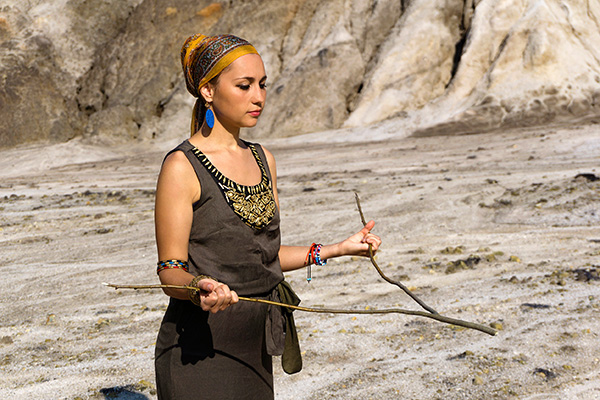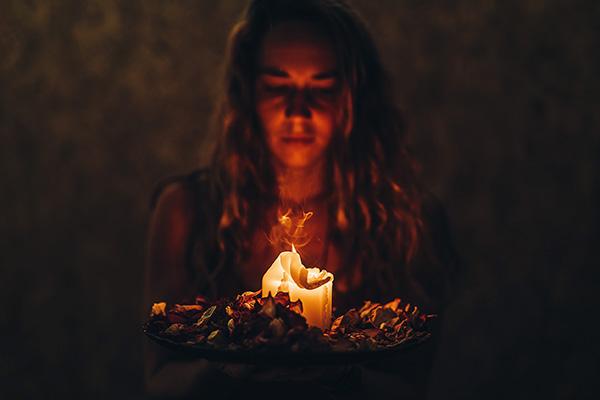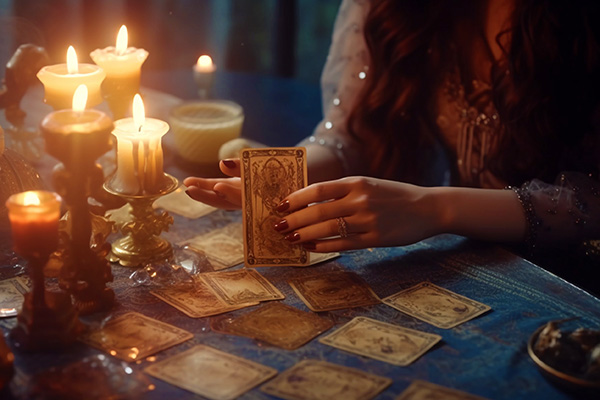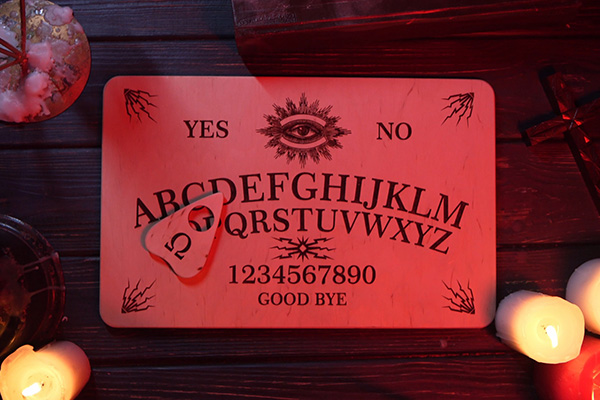divination practice
Everything Happens For A Reason
 Challenges, setbacks and disappointments are inevitable in life. Sometimes it can even feel like the entire universe is conspiring against us!
Challenges, setbacks and disappointments are inevitable in life. Sometimes it can even feel like the entire universe is conspiring against us!
But this perspective is an illusion born of our human experience. Spirit doesn’t desire our failure or suffering. Instead, it seeks to lead us to joy, abundance, and fulfillment.
Many of us, however, fall into the habit of blaming God, Spirit, the Universe, or others for the hardships we face. But to truly grow, we must change this mindset. Instead of dwelling on blame, it’s important to examine the lessons hidden in each challenge. By asking why these situations arose and what we can learn from them, we transform pain into wisdom and setbacks into stepping stones.
Consider the heartache of losing a long-term partner. You may have built a life together – marriage, children, shared dreams – only to wake up one day to abandonment. Questions arise: Why did this happen? What could I have done differently?
It’s important to realize that in most cases these events are not your fault. Free will governs each person’s choices. While her decision to leave may hurt you deeply, it is a reflection of her own path, not your worth. Self-doubt often creeps in, especially for women, as thoughts of inadequacy arise. But self-esteem cannot come from others-it must come from within.
Instead of focusing on what you could have done, consider this: their departure may have been necessary for your growth. Spirit often removes people from our lives to make room for greater blessings. In hindsight, you may realize that staying with that person would have hindered your potential or delayed the arrival of something better.
The Magic Of Dowsing Stands The Test Of Time
 Dowsing, also known as “divining” or “water witching,” is an ancient practice that uses a tool such as a pendulum or divining rod to locate what is hidden, most commonly underground water, minerals, or lost items. it is also a divination method used to tap into the unseen or mystical to gain spiritual, psychic, or energetic insights.
Dowsing, also known as “divining” or “water witching,” is an ancient practice that uses a tool such as a pendulum or divining rod to locate what is hidden, most commonly underground water, minerals, or lost items. it is also a divination method used to tap into the unseen or mystical to gain spiritual, psychic, or energetic insights.
While skeptics dismiss it as pseudoscience, dowsing has persisted in many cultures for thousands of years, standing the test of time as a mysterious blend of mysticism and physics. I believe its continued presence throughout history speaks to its importance and continued relevance in today’s technological society.
Dowsing has ancient roots dating back thousands of years, although its exact historical beginnings remain uncertain. Archaeological evidence suggests that the practice dates back to ancient Egypt and China, where early civilizations used rudimentary dowsing techniques to locate water and minerals. Cave paintings in North Africa from around 8000 B.C. depict people holding forked sticks, which many experts believe may be dowsing rods.
The ancient Greeks and Romans were also familiar with dowsing, especially for locating underground water sources. They considered the dowsing rod or pendulum a sacred tool capable of tapping into hidden energies. It was believed that certain materials, especially wood or metal, could act as conduits for detecting invisible forces in the earth.
In the Middle Ages, dowsing became more widely practiced in Europe, often by miners searching for metal veins, especially during the mining booms in Germany and England. However, due to its inexplicable, mystical nature, dowsing also increasingly became associated with the occult and witchcraft, leading to its condemnation by the church.
Samhain Ritual For Personal Tranformation
 One of the most mystical and energetically powerful times in the metaphysical calendar is upon us again tomorrow. Samhain, also known as the Celtic New Year, is a sacred festival celebrated on October 31st.
One of the most mystical and energetically powerful times in the metaphysical calendar is upon us again tomorrow. Samhain, also known as the Celtic New Year, is a sacred festival celebrated on October 31st.
Samhain traditionally marks the end of the harvest season and the beginning of the winter. It is a time to honor our ancestors, reflect on the thinning veil between the physical and spirit realms, and set intentions for the new annual cycle ahead.
Samhain holds special significance for those who are attuned to the cycles of nature and the spirit world. Traditionally, the boundaries between the physical and spirit realms were believed to be at their thinnest on this night.
The Celts and Norse in particular saw it as a time when communication with ancestors, departed loved ones and the gods was most possible, providing guidance for the future. For the Vikings and other northern European cultures, Samhain was also a time for divination. Runes, symbols of cosmic wisdom, were often used to gain insight into the coming year.
This year, Samhain carries a particularly powerful energy as it coincides with the Waning Crescent Moon’s transition from Libra to Scorpio. This last lunar phase before renewal invites us to release what no longer serves us, and its journey from the balanced, harmonious energy of Libra into the intense, transformative depths of Scorpio will amplify this process.
Libra’s influence encourages reflection on relationships, inner balance, and the need for harmony, while Scorpio’s energy propels us toward deeper introspection, emotional transformation, and embracing the mysteries of life, death, and rebirth.
The Soul Secrets Of Your Known Name Number
 Numerology, the ancient mystical study of numbers and its influence on our daily existence, goes far beyond calculating the meaning of your birth date.
Numerology, the ancient mystical study of numbers and its influence on our daily existence, goes far beyond calculating the meaning of your birth date.
While many people are familiar with the concept of the life path number, which is derived from one’s birth date, few realize that their known name number also holds profound insights into their character, destiny, and spiritual journey.
Also known as the expression number, the calculation of this number is a core component of numerology used by practitioners to explore one’s personality, potential, and life path. Calculating this number can be eye-opening and transformative.
Metaphysically, names are not arbitrary; they are energetic vibrations that carry specific meanings and influences.
Your known name is the name you go by in everyday life, whether it is the name your parents gave you at birth or a nickname that has stuck with you over time.
The name you identify with carries an energetic signature that reveals much about your personality, your purpose, and the unique challenges or gifts you may encounter in this lifetime.
In the practice of numerology, the letters in your name are assigned numerical values based on a system known as the Pythagorean Number Table, where each letter corresponds to a number from 1 to 9. By adding up the numbers associated with the letters in your known name, you can uncover several key numbers that offer insight into your personality, strengths, and life purpose.
The Timeless Appeal Of Tarot Divination
 I have yet to meet a spiritually-minded person who does not like the Tarot, or at least is not a little intrigued by this famous deck of cards.
I have yet to meet a spiritually-minded person who does not like the Tarot, or at least is not a little intrigued by this famous deck of cards.
The Tarot is arguably the world’s most popular and widely used divination tool, renowned for its rich symbolism and the depth of insight it offers. As an esoteric tradition dating back centuries, the Tarot has evolved into a diverse, sophisticated system of divination used by people from all walks of life to explore the mysteries of the mind, spirit, and the future.
Unlike some other forms of divination that require specialized knowledge or tools, the Tarot is accessible to both beginners and seasoned practitioners, offering a unique blend of art, intuition, mysticism, and storytelling. Its versatility allows it to address a wide range of questions, from personal and spiritual dilemmas to broader societal issues, making it a go-to resource for those seeking guidance, clarity, and self-discovery in an ever-changing world.
Each of the 78 cards in a Tarot deck is loaded with symbolic imagery and archetypal meanings that can be interpreted on multiple levels, from the deeply psychological to the spiritual and mystical. This layered symbolism allows diviners to explore personal dilemmas, spiritual growth, and the mysteries of life.
Unlike other divination tools that may rely on more rigid systems, Tarot offers a fluid framework that adapts to the reader’s intuition, personal beliefs, and level of psychic ability, making it accessible to people of diverse backgrounds and spiritual practices.
Reconnecting With Your Inner Light
 These days, it’s easy to feel lost, anxious, or just plain drained. We juggle the pressure to succeed, increasing isolation, endless app notifications, and even a creeping sense of loneliness or hopelessness.
These days, it’s easy to feel lost, anxious, or just plain drained. We juggle the pressure to succeed, increasing isolation, endless app notifications, and even a creeping sense of loneliness or hopelessness.
It’s no wonder so many of us feel overwhelmed and disconnected from our true selves and the deeper source of wisdom within that illuminates our lives. Instead of feeling alive and vibrant, for many people it’s just a matter of getting through the day.
But here’s the good news: There is a way out of this gray fog, and it doesn’t involve a fancy retreat or running away to join the circus.
It’s about reconnecting with the light within you-the spark of divinity that’s always been there. Once you tap into that, everything changes. You begin to feel grounded, peaceful and purposeful. Life becomes richer, more joyful, and you’ll find yourself smiling a lot more!
The spiritual concept of “light” is central to many Eastern wisdom traditions. In Hinduism, for example, “light” symbolizes divine knowledge, truth, and the divine self (atman). The famous Sanskrit phrase “tamaso mā jyotir gamaya” (lead me from darkness to light) from the Brihadaranyaka Upanishad refers to our innate desire for enlightenment and spiritual knowledge.
The concept of enlightenment (bodhi), metaphorically symbolized by light, is also central to Buddhism. In achieving enlightenment, one is said to attain wisdom and freedom from the darkness of ignorance.
